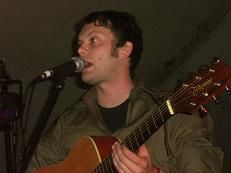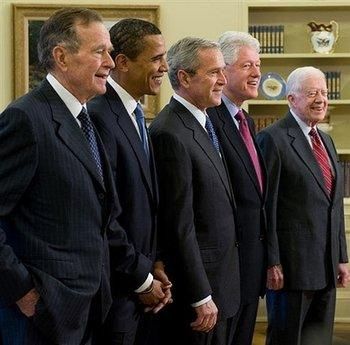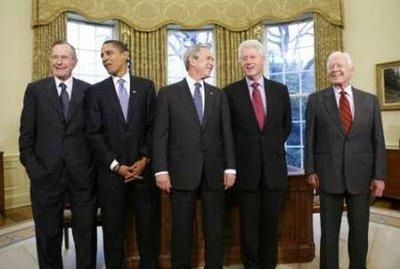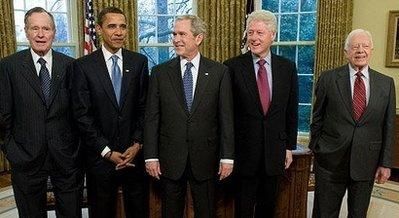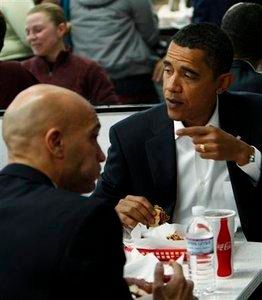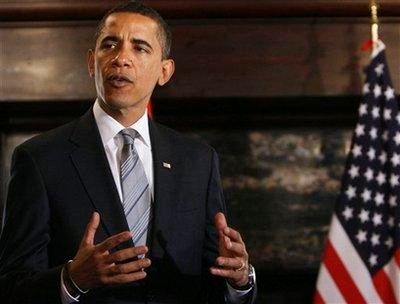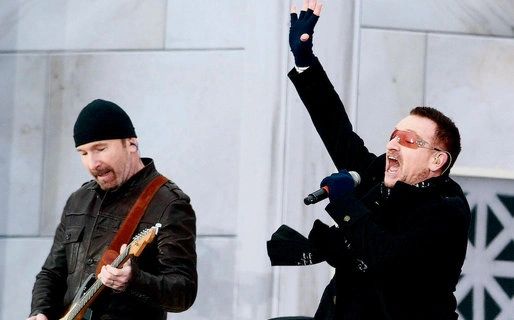Irish Born Singer Songwriter
Gus McCann lined up for role in
BrokeBack Mountain- The Untold Story.
http://brokebackmountaintheuntoldstory.com/

 Gus McCann in Dublin singing the old Irish Classic "Dublin In My Tears" in the streets of Dublin after receiving hisUSA Weekly News 100 Star Award a the 2008 Edinburgh Fringe Festival. Gus McCann is riding high with an offer to play a part in a film and a recording contract..Gus however does not ever like to forget his roots on the streets of Dublin where he cut his teeth singing a mixture of the Old Irish Ballads and his own poetry all about life and the lessons life hands out, which Gus puts to his own music... Gus McCann is also about to embark on a world tour bringing his soulful voice and music to as many people around the world as he can....
Gus McCann in Dublin singing the old Irish Classic "Dublin In My Tears" in the streets of Dublin after receiving hisUSA Weekly News 100 Star Award a the 2008 Edinburgh Fringe Festival. Gus McCann is riding high with an offer to play a part in a film and a recording contract..Gus however does not ever like to forget his roots on the streets of Dublin where he cut his teeth singing a mixture of the Old Irish Ballads and his own poetry all about life and the lessons life hands out, which Gus puts to his own music... Gus McCann is also about to embark on a world tour bringing his soulful voice and music to as many people around the world as he can....
Gus McCann, Ireland's new Bob Dylan and
Eliah the amazing 12 string guitarist from California
out celebrating the 2008 Dublin Fringe Festival
For more on the Dublin Fringe festival click here for
www.dublinfringefestival.com
Gus McCann received USA Weekly News 100 Star Awards for his performances in the 2008 Dublin Fringe Festival and the 2008 Edinburgh Fringe Festival, and was noticed by the INL News Team as being perfect to play a role and write a theme song for the new film being filmed in 2009 in various locations around the world including Mexico, California, Montana, Canada, Australia and the United Kingdom
BrokeBack Mountain - The Untold Story
being produced by International News Limited
in partnership with a Los Angelos film production company
About Los Angeles
 The old city plaza, 1869
The old city plaza, 1869
City of Los Angeles in 2009

Los Angeles City Hall, shown here in 1931, was built in 1928 and was the tallest structure in the city until 1964, when height restrictions were removed.

Downtown Los Angeles saw heavy development from the 1980s to 1990s, including the construction of some of the city's tallestskyscrapers.

Map of Los Angeles
Los Angeles
(pronounced /l?s 'ænd??l?s/ los-AN-j?-l?s; Spanish pronunciation: [los 'a?xeles]) is the largest city in the state ofCalifornia and the Western United States as well as second largestUnited States.[1] Often abbreviated as L.A. and nicknamed The City of Angels, Los Angeles is rated an alpha world city, has an estimated population of 3.8 million[2] and spans over 498.3 square miles (1,290.6 km2) in Southern California. Additionally, the Los Angeles metropolitan area is home to nearly 12.9 million residents,[3]globe and speak 224 different languages. Los Angeles is the seatLos Angeles County, the most populated and one of the most diversecounties[4] in the United States. Its inhabitants are known as "Angelenos" (/ænd??'li?no?z/). who hail from all over the of in the
Los Angeles was founded September 4, 1781, by Spanish governor Felipe de Neve as El Pueblo de Nuestra Señora la Reina de los Ángeles de la Porciúncula (The Village of Our Lady, the Queen of the Angels of Porziuncola).[5] It became a part of Mexico in 1821, following its independence from Spain. In 1848, at the end of the Mexican-American War, Los Angeles and California were purchased as part of the Treaty of Guadalupe Hidalgo, thereby becoming part of the United States; Mexico retained the territory of Baja California. Los Angeles was incorporatedas a municipality on April 4, 1850, five months before California achieved statehood.
Los Angeles is one of the world's centers of business, international trade, entertainment, culture, media, fashion,science, technology, and education. It is home to renowned institutions covering a broad range of professional and cultural fields, and is one of the most substantial economic engines within the United States. Los Angeles leads the world in producing popular entertainment — such as motion picture, video games, television, and recorded music — which forms the base of its international fame and global status.
History of Loas Angelos
The Los Angeles coastal area was first settled by the Tongva (or Gabrieleños) and Chumash Native American tribes hundreds of years ago. The first Europeans arrived in 1542 under Juan Rodríguez Cabrillo, a Portuguese-bornexplorer who claimed the area as the City of God for the Spanish Empire. However, he continued with his voyage and did not establish a settlement.[6]Gaspar de Portola, along with Franciscan missionary Juan Crespí, reached the present site of Los Angeles on August 2, 1769. Crespí noted that the site had the potential to be developed into a large settlement.[7]
In 1771, Franciscan friar Junípero Serra built the Mission San Gabriel Arcangel near Whittier Narrows, in what is now called San Gabriel Valley.[8] In 1777, the new governor of California, Felipe de Neve, recommended to Antonio María de Bucareli y Ursúa, viceroy of New Spain that the site noted by Juan Crespí be developed into a pueblo. The town was officially founded on September 4, 1781, by a group of forty-four settlers known as "Los Pobladores." Tradition has it that on this day they were escorted by four Spanish colonial soldiers, two priests from the Mission and Governor de Neve. The town was named El Pueblo de Nuestra Señora la Reina de los Ángeles del Río de Porciúncula(The Town of Our Lady the Queen of the Angels on the Porciúncula River).[9]Hispanic culture that had emerged in northern Mexico among a racially mixed society. Two-thirds of the settlers were mestizo or mulatto, and therefore, had African and Indian ancestry. More importantly, they were intermarrying.[10] The settlement remained a small ranch town for decades, but by 1820 the population had increased to about 650 residents.[11] Today, the pueblo is commemorated in the historic district of Los Angeles Pueblo Plaza and Olvera Street, the oldest part of Los Angeles.[12]
New Spain achieved its independence from the Spanish Empire in 1821, and the pueblo continued as a part ofMexico. During Mexican rule, Governor Pío Pico, made Los Angeles Alta California's regional capital. Mexican rule ended during the Mexican–American War: Americans took control from the Californios after a series of battles, culminating with the signing of the Treaty of Cahuenga on January 13, 1847.
Railroads arrived when the Southern Pacific completed its line to Los Angeles in 1876.[13] Oil was discovered in 1892, and by 1923 Los Angeles was producing one-quarter of the world's petroleum.[14]
By 1900, the population had grown to more than 102,000 people,[15] putting pressure on the city's water supply.[16] 1913's completion of the Los Angeles Aqueduct, under the supervision of William Mulholland, assured the continued growth of the city.
In the 1920s, the motion picture and aviation industries flocked to Los Angeles. In 1932, with population surpassing one million,[17]Summer Olympics.
The post-war years saw an even greater boom, as urban sprawlSan Fernando Valley.[18] In 1969, Los Angeles became one of the birthplaces of the Internet, as the first ARPANET transmission was sent from UCLA to SRI inMenlo Park.[19]
Also in the 1980s, Los Angeles became the center of the heavy metal music scene, especially glam metalbands.[20] In 1984, the city hosted the Summer Olympic Games for the second time. Despite being boycotted by 14 Communist countries, the 1984 Olympics became the most financially successful in history, and only the second Olympics to turn a profit – the other being the 1932 Summer Olympics, also held in Los Angeles.
During the remaining decades of the 20th century, the city was plagued by increasing gang warfare, drug trades, and police corruption. Racial tensions erupted again in 1992 with the Rodney King controversy and the large-scale riots that followed the acquittal of his police attackers. In 1994, the 6.7 Northridge earthquake shook the city, causing $12.5 billion in damage and 72 deaths.[21]
Voters defeated efforts by the San Fernando Valley and Hollywood[22]
Gentrification and urban redevelopment have occurred in many parts of the city, most notably Hollywood,Koreatown, Silver Lake, Echo Park and Downtown.[23]
Geography
Los Angeles is irregularly shaped and covers a total area of 498.3 square miles (1,291 km2), comprising 469.1 square miles (1,214.9 km²) of land and 29.2 square miles (75.7 km²) of water. The city extends for 44 miles (71 km) longitudinally and for 29 miles (47 km) latitudinally. The perimeter of the city is 342 miles (550 km). It is the only major city in the United States bisected by a mountain range.
The highest point in Los Angeles is Mount Lukens, also called Sister Elsie Peak.[24] Located at the far reaches of the northeastern San Fernando Valley, it reaches a height of 5,080 ft (1,548 m). The major river is the Los Angeles River, which begins in the Canoga Park district of the city and is largely seasonal. The river is lined in concrete for almost its entire length as it flows through the city into nearby Vernon on its way to the Pacific Ocean.
Geology
Los Angeles is subject to earthquakes due to its location in the Pacific Ring of Fire. The geologic instability produces numerous fault lines both above and below ground, which altogether cause approximately 10,000 earthquakes every year.[25] One of the major fault lines is the San Andreas Fault. Located at the boundary between the Pacific Plate and the North American Plate, it is predicted to be the source of Southern California's next big earthquake.[26] Major earthquakes to have hit the Los Angeles area include the 2008 Chino Hills earthquake, 1994 Northridge earthquake, the 1987 Whittier Narrows earthquake, the 1971 San Fernando earthquake near Sylmar, and the 1933 Long Beach earthquake. Nevertheless, all but a few quakes are of low intensity and are not felt.[25] The most recent earthquake felt was the 5.4 Chino Hills earthquake on July 29th 2008. Parts of the city are also vulnerable to Pacific Ocean tsunamis; harbor areas were damaged by waves from the Valdivia earthquake in 1960.[27] The Los Angeles basin and metropolitan area are also at risk from blind thrust earthquakes.[28]
 Space Shuttle Discovery Finds Stowaway Bat
Space Shuttle Discovery Finds Stowaway Bat Mr Wijat's friend Magic Rabbit
Mr Wijat's friend Magic Rabbit 
 STUNTMAN: Jon Templeton will act as Hugh Jackman's stunt double in the film Australia. Picture: MEGAN RAYLE
STUNTMAN: Jon Templeton will act as Hugh Jackman's stunt double in the film Australia. Picture: MEGAN RAYLE Annie Lennox
Annie Lennox  Gazans' attempts at rescu
Gazans' attempts at rescu "I saw him [the solider] hiding next to the shop.
"I saw him [the solider] hiding next to the shop.


 Public face of Saddam regime jailed
Public face of Saddam regime jailed





































 Tent premiere for Postlethwaite film
Tent premiere for Postlethwaite film





















